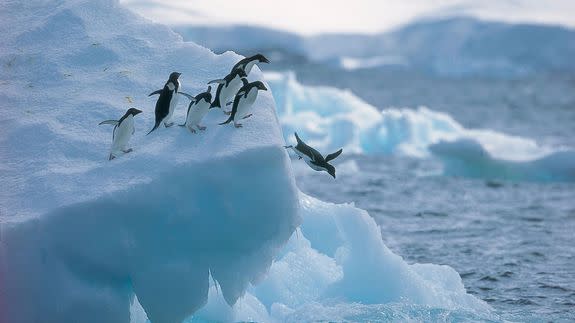Historic deal establishes world's largest marine protected area in Antarctica

Countries around the world came together in the name of conservation this week.
Dozens of nations passed an agreement that sets aside more than 1.5 million square kilometres (932,000 square miles) of the Ross Sea in Antarctica as the world's largest marine protected area (MPA) after five years of drawn-out negotiations. The protected area is equal in size to an area larger than the UK, France, Germany and Italy combined.
SEE ALSO: The frozen beauty of Antarctica
Delegates from 24 nations and the European Union voted unanimously in favor of the MPA agreement at the annual meeting of the Commission for the Conservation of Antarctic Marine Living Resources (CCAMLR) in Hobart, Australia this week.

Image: pew charitable trusts
The agreement comes into effect starting in December 2017, placing limits or prohibiting certain human activities in the area. Seventy-two percent of it will be a "no-take zone" which bans all fishing, while the remainder will allow some harvesting of fish and krill for scientific research, according to the CCAMLR.
Such a measure aims to protect species and habitat, which can help to rebuild fish stocks and sustain biological diversity.
"A number of details regarding the MPA are yet to be finalised but the establishment of the protected zone is in no doubt, and we are incredibly proud to have reached this point," CCAMLR Executive Secretary, Andrew Wright, said in a statement.
#CCAMLR to create world's largest Marine Protected Area (#MPA) in Antarctica's Ross Sea. Agreed today in Hobart. pic.twitter.com/7UcHldOaVk
— CCAMLR Secretariat (@CCAMLR1) October 28, 2016
The area is home to 50 percent of the world's ecotype-C killer whales (a.k.a. Ross Sea orca), 40 percent of Adélie penguins and 25 percent emperor penguins, according to the UN Environment Programme.
Ross Sea is the latest in a string of MPAs to be created in an increased effort to protect the world's oceans.
In 2009, the CCAMLR established the world's first high-seas MPA in the South Orkney Islands southern shelf, located in the south Atlantic.
In August, U.S. President Barack Obama expanded the Papahānaumokuākea Marine National Monument off the coast of Hawaii. While the Hawaii marine national monument was the largest MPA at the time, it has now been eclipsed by the Ross Sea decision.
